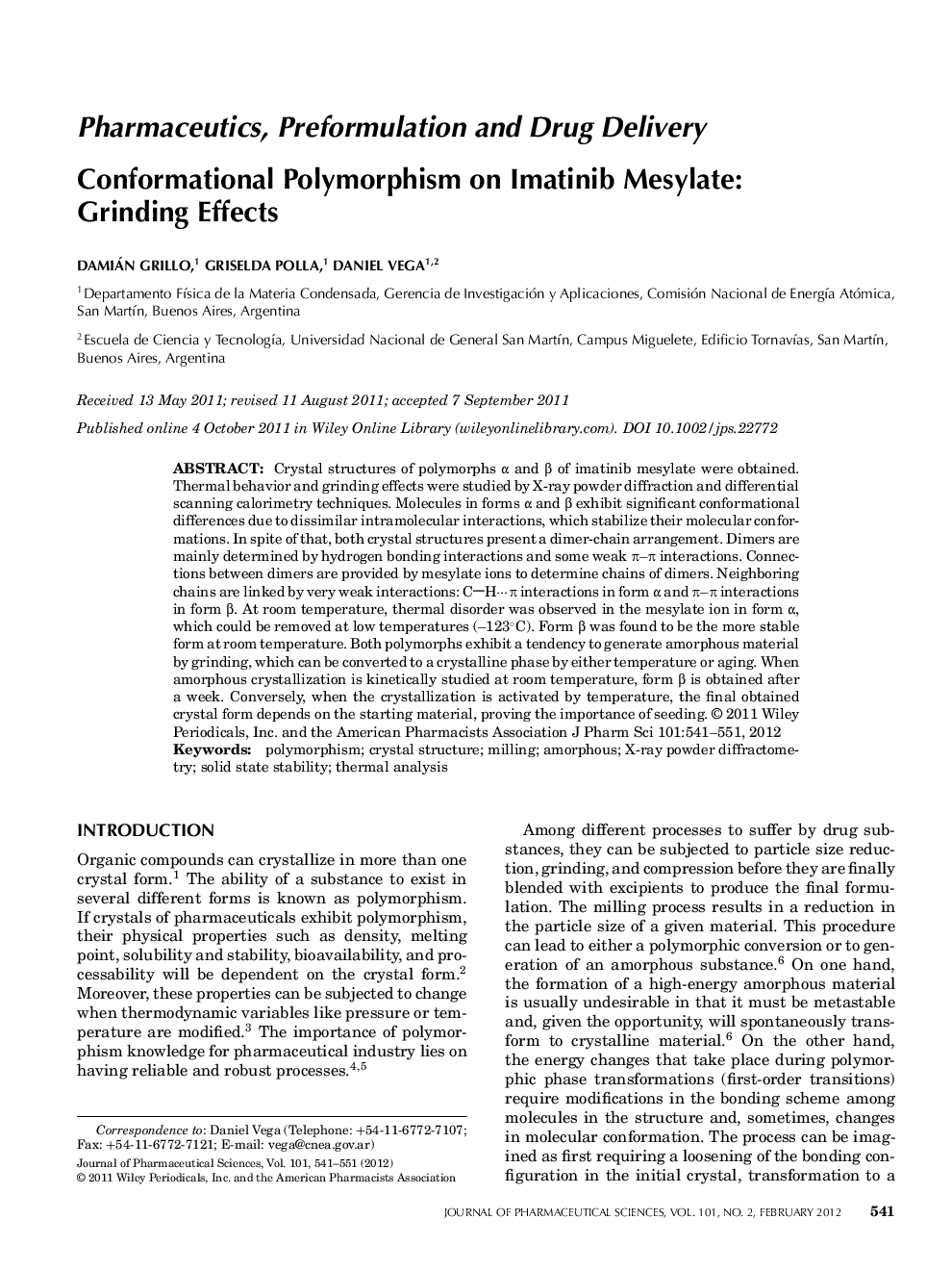| Article ID | Journal | Published Year | Pages | File Type |
|---|---|---|---|---|
| 2485235 | Journal of Pharmaceutical Sciences | 2012 | 11 Pages |
Abstract
Crystal structures of polymorphs α and β of imatinib mesylate were obtained. Thermal behavior and grinding effects were studied by X-ray powder diffraction and differential scanning calorimetry techniques. Molecules in forms α and β exhibit significant conformational differences due to dissimilar intramolecular interactions, which stabilize their molecular conformations. In spite of that, both crystal structures present a dimer-chain arrangement. Dimers are mainly determined by hydrogen bonding interactions and some weak Ï-Ï interactions. Connections between dimers are provided by mesylate ions to determine chains of dimers. Neighboring chains are linked by very weak interactions: CâHÂ·Â·Â·Ï interactions in form α and Ï-Ï interactions in form β. At room temperature, thermal disorder was observed in the mesylate ion in form α, which could be removed at low temperatures (-123°C). Form β was found to be the more stable form at room temperature. Both polymorphs exhibit a tendency to generate amorphous material by grinding, which can be converted to a crystalline phase by either temperature or aging. When amorphous crystallization is kinetically studied at room temperature, form β is obtained after a week. Conversely, when the crystallization is activated by temperature, the final obtained crystal form depends on the starting material, proving the importance of seeding. © 2011 Wiley Periodicals, Inc. and the American Pharmacists Association.
Keywords
Related Topics
Health Sciences
Pharmacology, Toxicology and Pharmaceutical Science
Drug Discovery
Authors
Damián Grillo, Griselda Polla, Daniel Vega,
